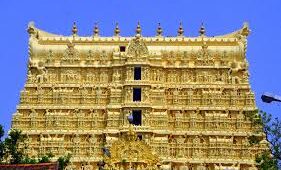History
The Padmanabhaswamy Temple, located in Thiruvananthapuram, Kerala, is one of the most revered and ancient Hindu temples dedicated to Lord Vishnu. The temple's origins date back to at least the 6th century, with references in ancient texts like the Puranas and Mahabharata. It gained prominence under the rule of the Travancore royal family, especially after King Marthanda Varma dedicated the kingdom to Lord Padmanabha in the 18th century, declaring himself as the deity’s "Dasan" (servant). The temple's architecture is a blend of Dravidian and Kerala styles. In recent years, it drew global attention when secret vaults beneath the temple were discovered, revealing immense treasures—estimated to be worth billions. These treasures highlight the temple’s historical and cultural significance. Today, the Padmanabhaswamy Temple stands as a powerful symbol of devotion, history, and mystique, with strict rituals and dress codes preserving its sanctity.
Greatness:
The Padmanabhaswamy Temple is renowned for its spiritual, historical, and architectural grandeur. Dedicated to Lord Vishnu in the Anantha Shayana (eternal yogic sleep) posture, the temple symbolizes divine protection and cosmic order. It is considered one of the 108 Divya Desams, the holiest abodes of Vishnu according to Vaishnavism. The deity, adorned in gold and precious gems, stretches across three sanctums, a rare depiction in temple iconography. The temple’s architectural brilliance fuses Dravidian and Kerala styles, with intricate carvings and towering gopurams. Its unmatched wealth, discovered in secret underground vaults, is seen not merely as material treasure but as a testimony to centuries of devotion and royal patronage. The Travancore royal family, who ruled as servants of the deity, exemplified divine kingship. Strict rituals and ancient traditions are still maintained, offering a deep spiritual experience. Padmanabhaswamy Temple remains a powerful symbol of faith, mysticism, and cultural legacy.

Specialities:
The Padmanabhaswamy Temple, located in Thiruvananthapuram, Kerala, is renowned for its spiritual, historical, and architectural significance.
Dedicated to Lord Vishnu in a rare reclining posture, the massive idol is viewed through three doors, symbolizing his cosmic form. The temple combines Dravidian and Kerala architectural styles and maintains strict rituals and dress codes. Only Hindus are allowed inside, with men required to wear a traditional mundu.
Festivals:
- Alpashy festival (October-November)
- Painkuni festival (March-April)
- Vaikunta Ekadasi
- Laksha Deepam (once every six years)
Timings:
- 3:30AM - 12PM
- 4:30PM-7:20PM
FAQs
: Yes.
Women: Saree, salwar kameez with dupatta, or long skirt and blouse. No Western attire like jeans or skirts. Rental clothing is available near the temple.
Men: Must wear a dhoti; shirt/banyan should be removed before entering.
The temple is managed by a trust under the Travancore royal family, as per a Supreme Court ruling in 2020.
Yes, devotees can book special poojas, offerings (archanas), and darshan through the temple office.
There is no entry fee for darshan. However, special darshan tickets, poojas, and offerings (like Archana or Abhishekam) may have associated charges.


